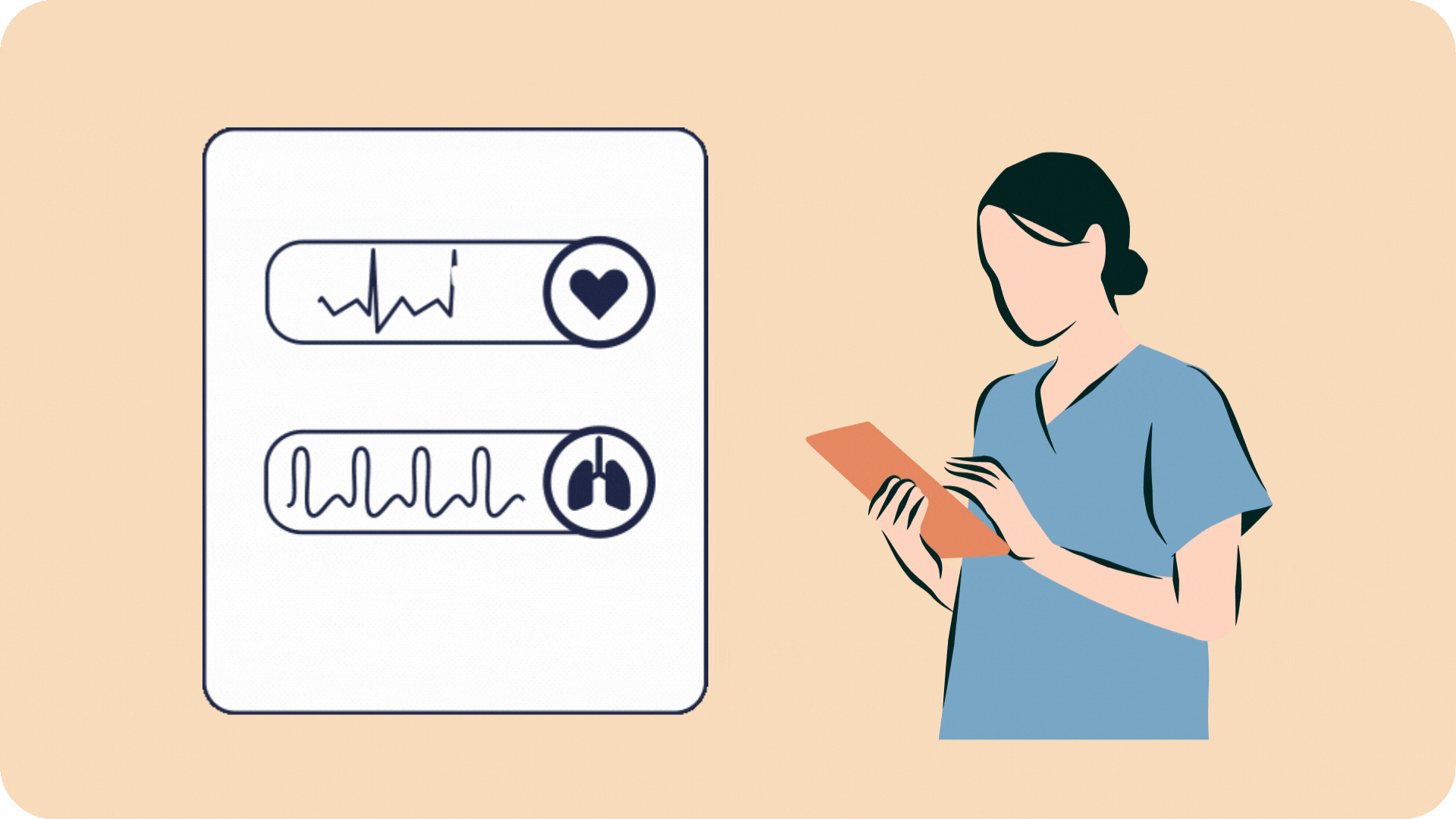Financial Toxicity & Breast Cancer
To what extent do breast cancer patients struggle with financial toxicity while battling this illness? What factors contribute to this financial toxicity?

Cardiometabolic health is more than a medical concern—it’s a workplace challenge with profound implications for employee well-being and organizational success.
As conditions like heart disease, diabetes, and obesity rise, so does their impact on productivity, healthcare costs, and quality of life.
With only 6.8% of Americans in optimal cardiometabolic health, the urgency for workplace interventions has never been more evident.
This article explores how employers can address these interconnected conditions through innovative strategies.
While the term “cardiometabolic” is used frequently in the scientific world, its meaning may not be universally understood.
So, what is cardiometabolic health?
Cardiometabolic health refers to a group of medical conditions involving the heart, metabolism, and blood vessels. Conditions like high blood pressure, obesity, high fasting triglycerides, and unhealthy cholesterol levels are all categorized under cardiometabolic health.
For a long time, employers have aimed to address each of these conditions independently.
Scientists, however, have proven that cardiometabolic conditions are interconnected and co-occurring, thereby raising the risk of developing a cascade of far more serious health issues.
When two or more of these cardiometabolic risk factors coexist, the risk of a heart attack or stroke is twice as high, and the chance of developing diabetes is five times greater within five to ten years.
Because of the multi-dimensional nature of these conditions, it is becoming increasingly important to reassess how we approach and treat them in the workplace.

Unfortunately, research tells us that we’re in worse health than we thought: less than 7% of Americans are in optimal cardiometabolic health.
Another study found that only one in five people in the U.S. have ideal heart health, as measured by the American Heart Association’s new Life Essentials metrics.
These eight metrics assessed physical activity, sleep, nicotine exposure, blood glucose, blood pressure, diet intake, blood lipids, and body mass index (BMI) to measure overall cardiovascular health accurately.
As a result of this poor health, on average, someone in the U.S. dies of cardiovascular complications every 33 seconds.
The good news is that many of the underlying drivers of cardiometabolic conditions can be controlled, prevented, and even reversed through lifestyle changes.
For example, diabetes can sometimes be reversed, and kidney disease can be managed to slow its progression, preventing kidney failure in some cases.
Did you know that nearly half of U.S. adults have some form of cardiovascular disease?
Another little-known fact is that heart disease has been the number one killer in the country for over a hundred years, since 1921.
As one can imagine, the impact of such a devastating figure is immense and has widespread effects, both on people’s personal and professional lives.
Chronic diseases like heart disease and diabetes not only impact employee well-being but also drive up healthcare costs for businesses.
If we examine heart disease in the workplace alone, it costs U.S. employers around $363 billion annually, driven by healthcare expenses and productivity loss due to absenteeism and presenteeism.
For employees, however, the burden often felt the hardest in the form of lost income, whether from unpaid sick days, early retirement or missed work due to illness.
The result is that chronic diseases such as hypertension, diabetes, and heart disease contribute to 28.2 million lost workdays annually, with an estimated $4.95 billion in lost income for employees.
The average person is estimated to spend around 90,000 hours at work over their lifetime. That is a third of our lives spent in an environment that promotes a primarily sedentary lifestyle, poor dietary options, and stress.
And while remote work is convenient, it isn’t much better for our health, as it reduces everyday movements like walking to meetings or commuting.
It is not a stretch then to conclude that our workplaces tend to contribute to or exacerbate many of the cardiometabolic risks.
In fact, many studies confirm that certain work design factors have direct links with our health and wellness.
For example, researchers recently found a significant correlation between workplace inflexibility and increased risk of cardiovascular disease, particularly among older employees.
Another study found that retired night shift workers had higher blood pressure and increased insulin resistance compared to those who never worked night shifts. And the harmful effects of night shift work on cardiometabolic health may last even after retirement.
Given how common all of these risk factors are in today’s work environment, targeted workplace interventions are essential.

So, what can be done to improve the cardiometabolic health of employees?
As the popular saying goes, “The first step in solving a problem is recognizing there is one.”
Consider these key statistics:
One consistent theme appears: a lack of knowledge among the general population.
As a result, raising awareness through regular health screenings is the first step in improving employee health.
Employers can address part of the problem by investing in early detection, prevention, and effective management of cardiometabolic risks.
Diabetes programs and other disease prevention programs that focus on physical activity and healthy lifestyles can help counter the effects of physical inactivity, poor diet, and obesity, which are major contributors to cardiometabolic diseases.
Tackling cardiometabolic diseases requires a comprehensive strategy that addresses both controllable and uncontrollable risk factors.
Uncontrollable or non-modifiable risk factors are those outside of our sphere of influence and ones that neither individuals nor organizations can change or improve.
Examples include:
Since neither employers nor employees can change these risk factors, the best way to address them is to provide early detection for those with elevated risks.
However, the controllable factors can be influenced or directly managed through lifestyle changes, medication adherence efforts, medical interventions, or workplace initiatives.
Below, we examine some of the controllable factors in the workplace.
Regular physical activity during the day can greatly benefit cardiometabolic health.
On-site fitness centers, walking meetings, and activity challenges are simple yet effective ways to lower employees’ risk of developing chronic conditions.
Studies have shown that companies that implement weight management programs often report better engagement and long-term adherence.
However, the same study emphasizes that long-term success in weight management often requires a holistic approach that addresses both individual behaviors and external influences.
Diet plays a critical role in the health of employees. For employers, this is a unique opportunity to influence healthier choices through workplace initiatives.
Subsidized healthy meals, educational workshops, and access to digestive health programs can shift eating habits positively.
Studies reveal that worksite-based dietary interventions can lead to modest short-term improvements in weight, BMI, and cholesterol levels among overweight or obese employees.
Where suitable, lifestyle changes can also be complemented with prescription medications such as Ozempic, Wegovy, and Mounjaro to help manage blood sugar levels and aid in weight loss.
What role does leadership play in shaping employee health?
Creating a culture of well-being starts with intentional policies and practices.
While many companies may present themselves as employee-centered and caring, without commitment through actions, they may come across as disingenuous.
The term “carewashing” was recently popularized to describe organizations that claim to prioritize employee well-being but fail to back it up with meaningful policies and frameworks.
A company might promote its cardiovascular health program.
Still, if it doesn’t address systemic issues like poor access to nutritious food options, long sedentary work hours, or lack of opportunities for physical activity, the initiative may not deliver meaningful results.
So, an organizational support framework must be holistic and proactive, addressing not just individual health initiatives but also the underlying job design factors that influence employee well-being.
This could mean offering flexible schedules, giving employees time to attend medical appointments without added stress, and balancing workloads.

By adopting innovative, inclusive, and holistic health initiatives, employers can play a crucial role in preventing and managing cardiometabolic conditions.
Employers can explore various strategies to improve the care provided to employees with cardiometabolic conditions.
Developing a successful program begins with understanding the specific health risks and needs of employees. This knowledge allows for the strategic selection of programs and vendors who can best address those needs.
Partnering with specialized vendors gives employees access to expertise and resources for maximum program impact.
Consider the following elements:
Mental health resources: Address stress and burnout with counseling, employee assistance programs, and stress management workshops.
Creating a heart-healthy workplace starts with making wellness the spirit of an organization. This means designing policies and spaces that make healthy choices the norm, not the exception.
Providing nutritious snack options, scheduling active breaks, and banning smoking are simple yet impactful ways to encourage a cultural shift toward better health.
Physical changes to the workspace can also make a big difference.
Incorporating standing desks, using stairwells, and providing easy access to fitness facilities can motivate employees to stay active throughout the day.
As mentioned earlier, knowledge is another crucial factor for success.
Workshops, newsletters, and digital resources on cardiometabolic health can help workers make informed decisions about their well-being.
To increase participation in these programs, employers can also gamify wellness initiatives and offer incentives or discounts.
To ensure long-term program success, employers must track and evaluate outcomes regularly.
Setting clear benchmarks and collaborating with vendors for comprehensive reporting can give employers a better idea of how to improve their cardiometabolic programs.
The statistics leave no room for doubt: cardiometabolic health is a significant challenge in today’s workforce.
To address this, future efforts must be centered around prevention and early intervention, identifying at-risk employees before conditions progress.
After all, an ounce of prevention is worth a pound of cure.
Looking ahead, we can also expect the integration of telehealth, remote monitoring, and AI-driven analytics to play a more significant role in the management of cardiometabolic health in the workplace.
Overall, by staying proactive, employers can reduce healthcare costs and improve productivity, while employees can take charge of their health, creating a healthier, more vibrant workplace for all.
Senior Content Writer at Shortlister
Browse our curated list of vendors to find the best solution for your needs.
Subscribe to our newsletter for the latest trends, expert tips, and workplace insights!
To what extent do breast cancer patients struggle with financial toxicity while battling this illness? What factors contribute to this financial toxicity?

Beyond legal compliance, accommodating chronic illness in the workplace has become a strategic tool for companies to control costs and improve employee well-being.

Explore the connection between stress and heart disease. Dive into the role of stress management and cardiovascular health programs in preventing coronary conditions.

As a new generation of anti-obesity drugs like Ozempic, Wegovy, and Mounjaro can potentially improve millions of Americans’ health and lives, the question arises: what’s the hidden cost?
Used by most of the top employee benefits consultants in the US, Shortlister is where you can find, research and select HR and benefits vendors for your clients.
Shortlister helps you reach your ideal prospects. Claim your free account to control your message and receive employer, consultant and health plan leads.